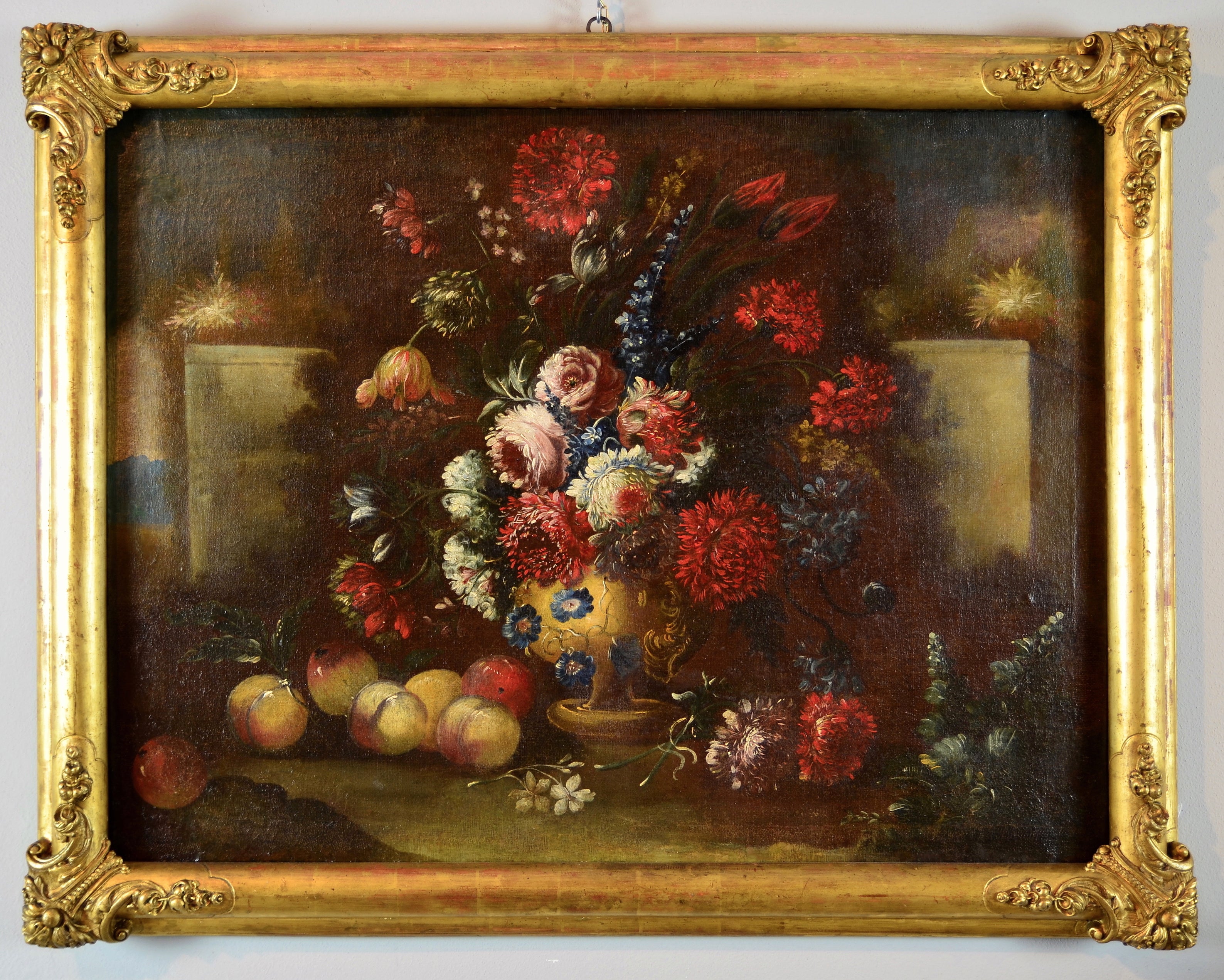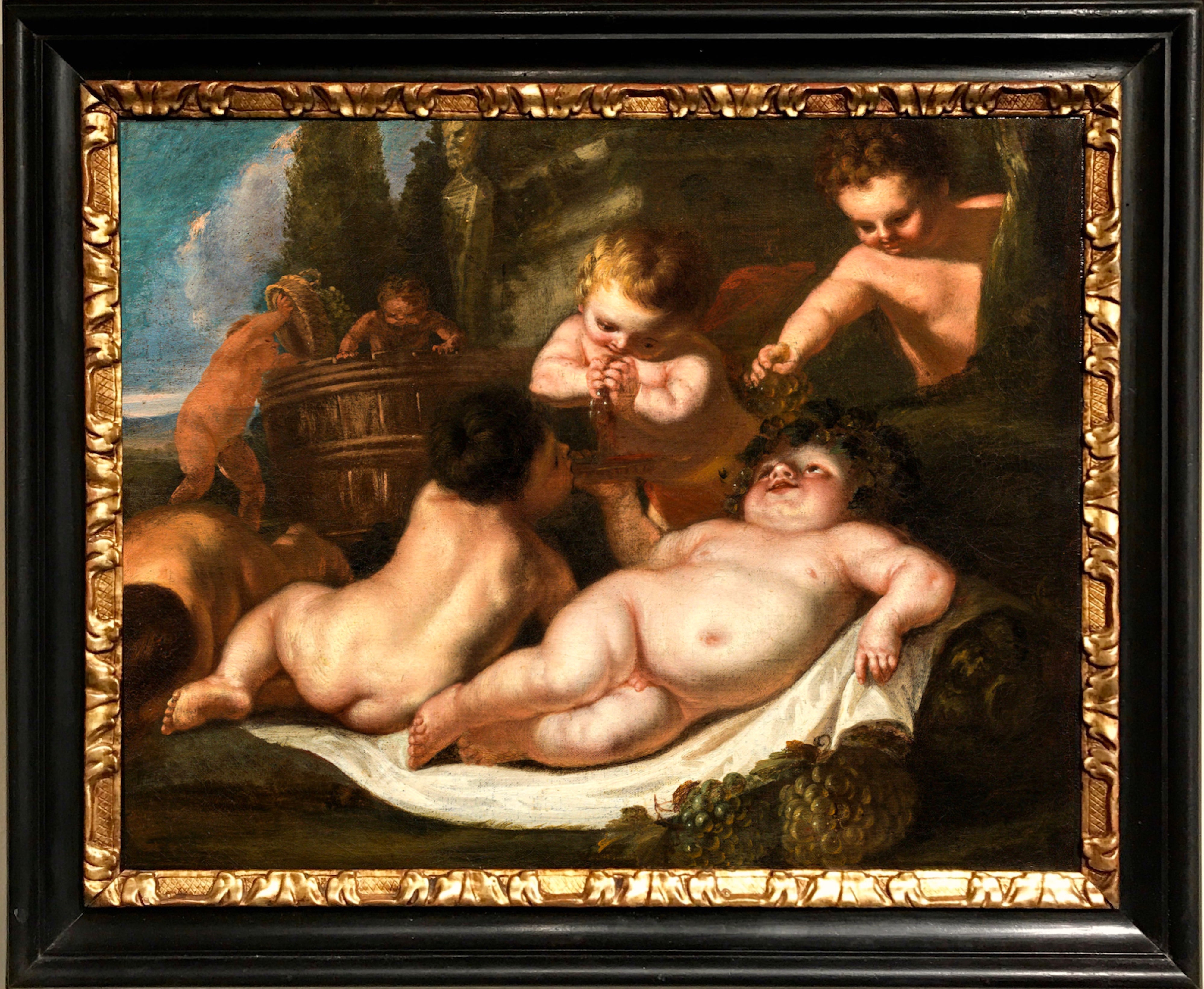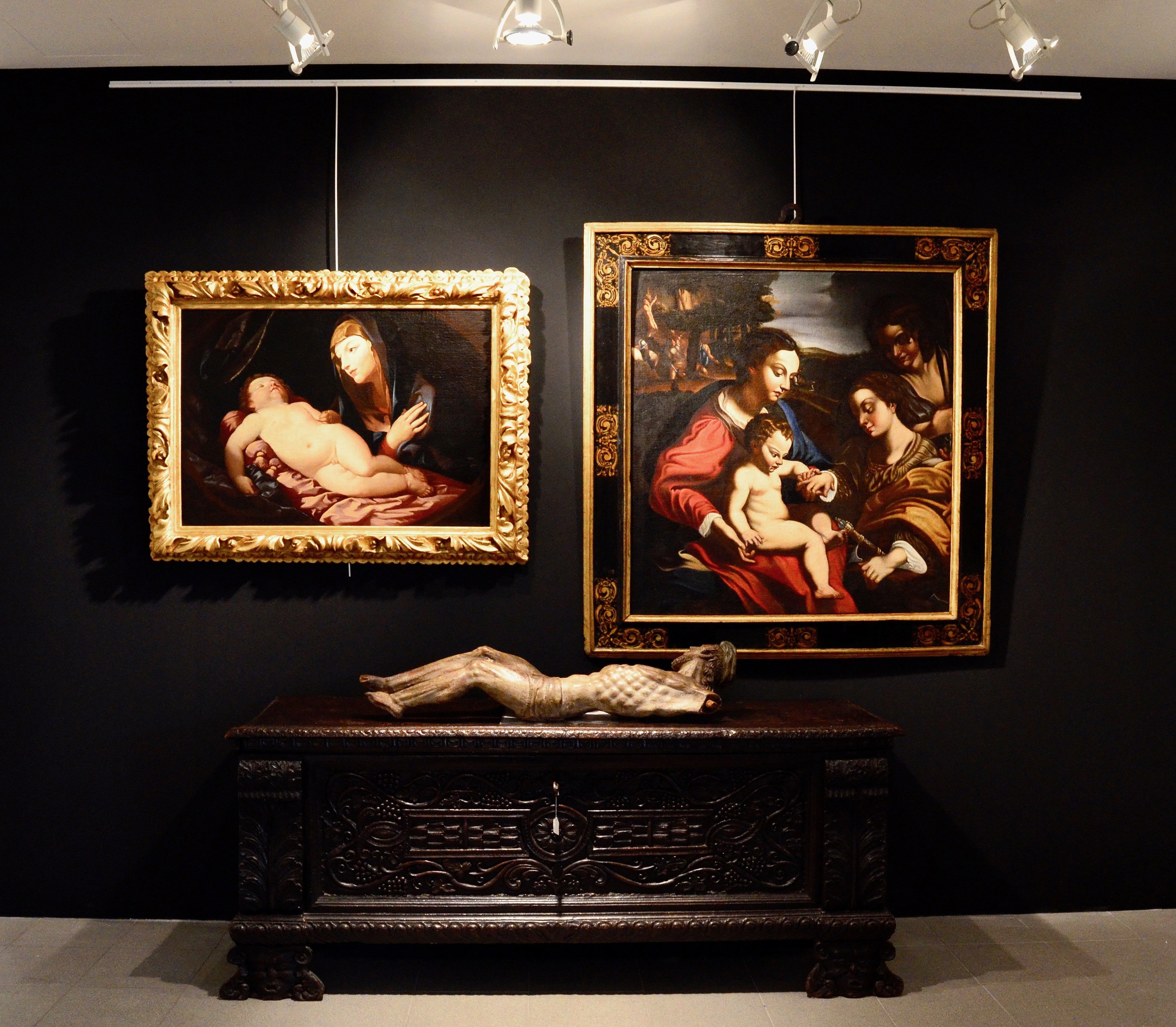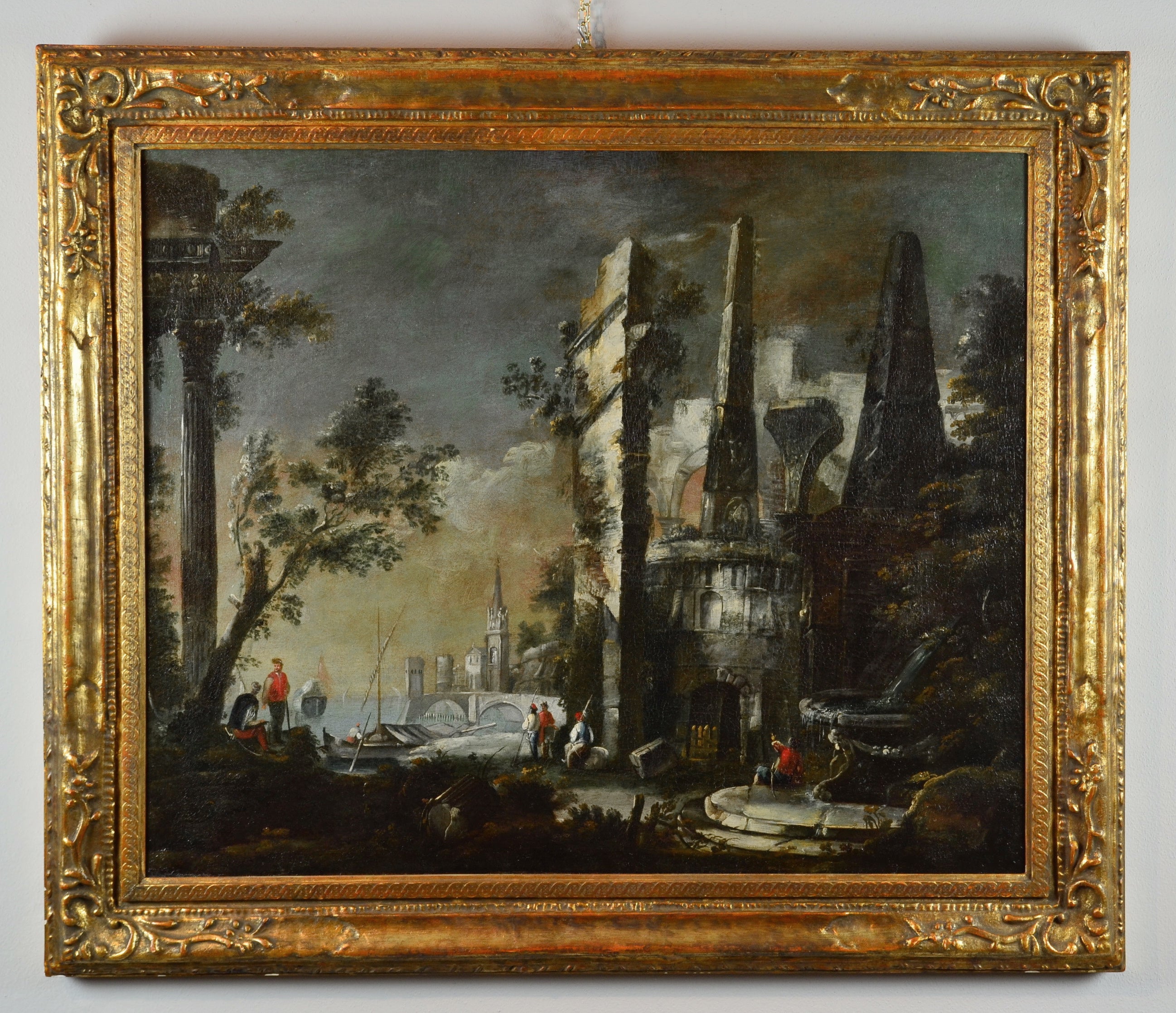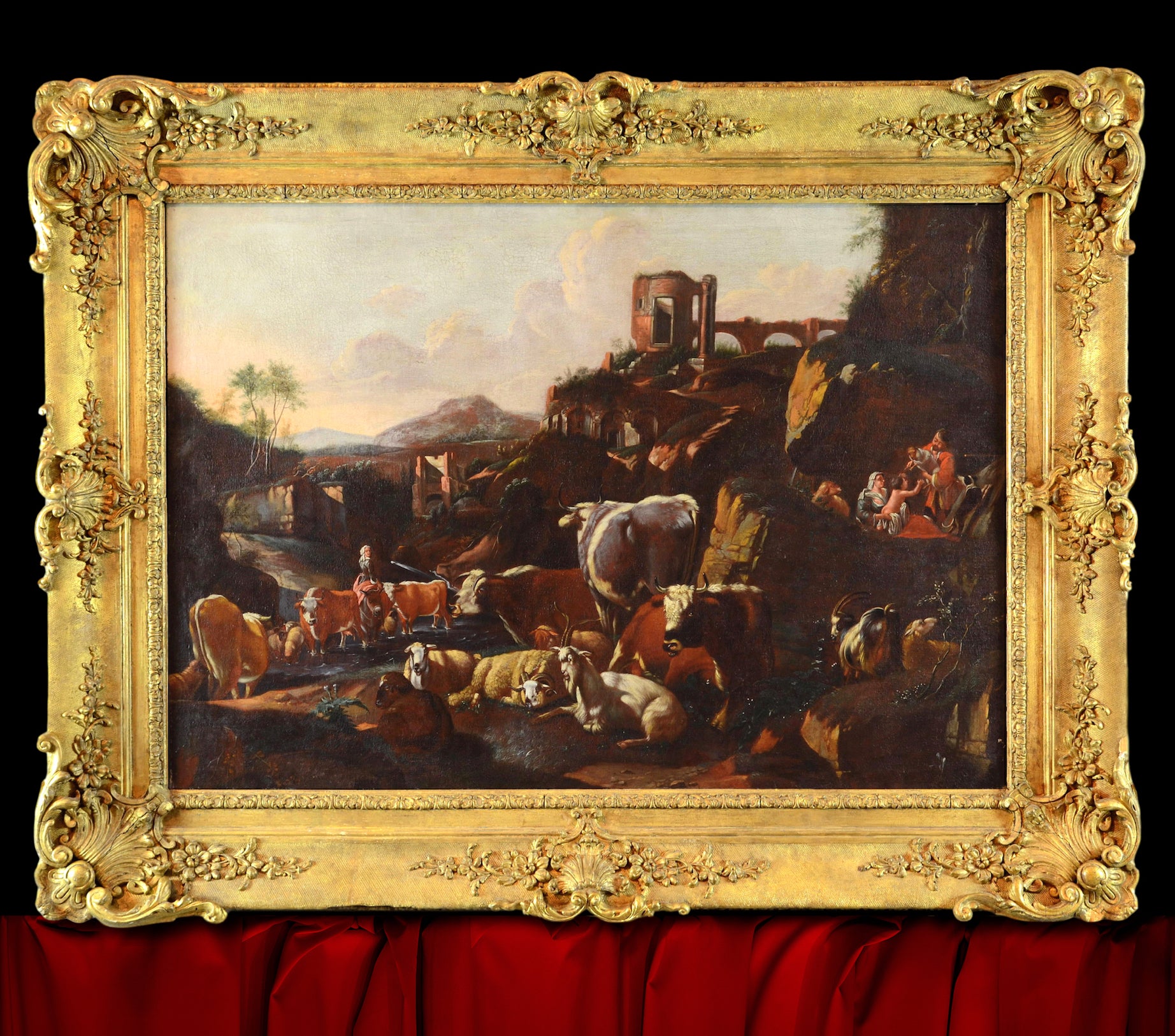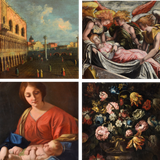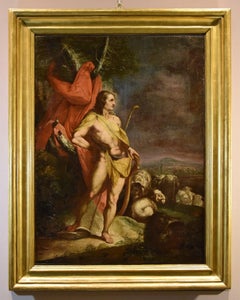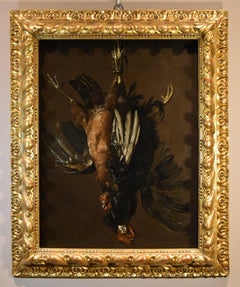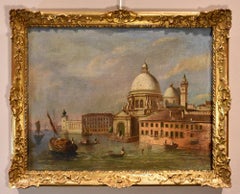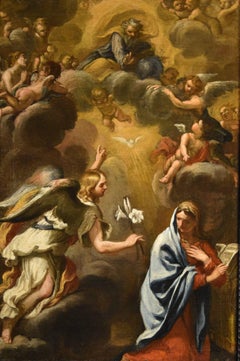About Antichita Castelbarco
Our gallery offers collectors and investors selected works of art of the XVII, XVIII and XIXth centuries, Italian, French and Flemish schools. All our works are guaranteed period and are accompanied by a detailed description in order to enlighten you as best as possible on the iconographic object, the artistic current and the reference of the artist.

Established in 20171stDibs seller since 2018
Featured Pieces
Apollo Van Haarlem Paint 17th Century Oil on canvas Old master Mythological Art
Located in Riva del Garda, IT
Cornelis Cornelisz. van Haarlem (Haarlem 1562–1638)Workshop
Apollo tending the flocks of Admetus
Oil on canvas 93 x 69 cm In frame 92 x 116 cm
The foreground is dominated by t...
Category
17th Century Old Masters Portrait Paintings
Materials
Oil
Still-Life Cassana Paint 17/18 Century Oil on canvas Old master Lombard school
Located in Riva del Garda, IT
Giovanni Agostino Cassana (Venice after 1658 - Genoa 1720)
Still life with a pair of gallinaceous birds
Oil on canvas 81 x 63 cm - Framed 100 x 81 cm
Provenance: Sotheby's Mi...
Category
17th Century Old Masters Still-life Paintings
Materials
Oil
Venice Guardi See Landscape 18/19th CEntury Paint Oil on canvas Old master Italy
Located in Riva del Garda, IT
Giacomo Guardi (Venice, 1764 – Venice, 1835) follower
View of Venice with the Basilica della Salute and the Punta della Dogana
oil on canvas
Dimensions: 40 x 52 cm. framed 48...
Category
18th Century Old Masters Landscape Paintings
Materials
Oil
Annunciation Ferri Paint 17th Century Oil on canvas Old master Religious Rome
Located in Riva del Garda, IT
Ciro Ferri (Rome, 1634 – Rome, 1689) Attributed to
Annunciation (probably a preparatory sketch)
Oil on canvas 61 x 41 cm - In frame 79 x 49 cm
The work, certainly commission...
Category
17th Century Old Masters Paintings
Materials
Oil
Christ Column Religious Paint 16th Century Oil on table Lombard School
Located in Riva del Garda, IT
Lombard School of the 1500s
Christ at the Column
Oil on panel 24 x 21 cm - Framed 42 x 39 cm
The painting, rich in pathos and strong spirituality, depicts a moment from the P...
Category
16th Century Old Masters Paintings
Materials
Oil
Coastal Landscape De Heusc Paint 17th Century Oil on canvas Old master
Located in Riva del Garda, IT
Jacob de Heush (Utrecht 1657 – Amsterdam 1701)
Coastal landscape with architectural ruins
Oil on canvas (80 x 102 cm - In frame 100 x 119 cm)
Provenance: Hampel Munich, 22.09.2...
Category
17th Century Old Masters Paintings
Materials
Oil
Pair Views Rome Landscape Joli Paint 18yh Century OIl on canvas Old master Art
Located in Riva del Garda, IT
Antonio Joli (Modena, 1700 – Naples, 1777)
Pair of views of Rome
1. View of Rome with Trajan's Column and the Church of the Holy Name of Mary
2. View of Rome (Piazza Colonna) ...
Category
18th Century Old Masters Paintings
Materials
Oil
Artist's Studio Thomas Paint 17/18th Century Oil on canvas Old master Flemisch
Located in Riva del Garda, IT
Gerard Thomas (Antwerp 1663-1720) Attributed to
The Artist's Studio
Oil on canvas (99 x 115 cm - in frame 70 x 86 cm)
This fascinating painting, depicting the interior of an ar...
Category
18th Century Old Masters Landscape Paintings
Materials
Oil
Battle Cavalry Landscape Calza Paint 17/18th Century Oil on canvas Old master
Located in Riva del Garda, IT
Antonio Calza (Verona, 1653 – Verona 1725)
Battle between Christian and Turkish cavalry
Oil on canvas 47 x 85 cm In frame 66 x 105 cm
Here we see a fierce battle between Ch...
Category
17th Century Old Masters Paintings
Materials
Oil
Saint John Baptist 16/17th Century Paint OIl on canvas Old master Tuscany school
Located in Riva del Garda, IT
Florentine painter, 16th-17th century
Saint John the Baptist
Oil on canvas 67 x 56 cm - In frame 98 x 83 cm
In bringing out the sculptural figure of this young Saint John the...
Category
17th Century Old Masters Paintings
Materials
Oil
Saint Michael Angels Roman School 17/18th Century Paint Oil on canvas Old master
Located in Riva del Garda, IT
Saint Michael the Archangel expels the rebellious angels from paradise (probably a preparatory sketch)
Roman school, 17th/18th century
Oil on canvas 99 x 73 cm Framed 119 x 94 ...
Category
17th Century Old Masters Figurative Paintings
Materials
Oil
Landscapes Couple Ricci Paint 18th Century Oil on canvas Old master Italy
Located in Riva del Garda, IT
Marco Ricci (Belluno 1676 – Venice 1730)
Circle of Pair of Arcadian landscapes with figures
Oil on canvas 56 x 72 cm. - Framed 77 x 93 cm.
This pair of charming landscapes, ex...
Category
18th Century Old Masters Paintings
Materials
Oil
More About Antichita Castelbarco
